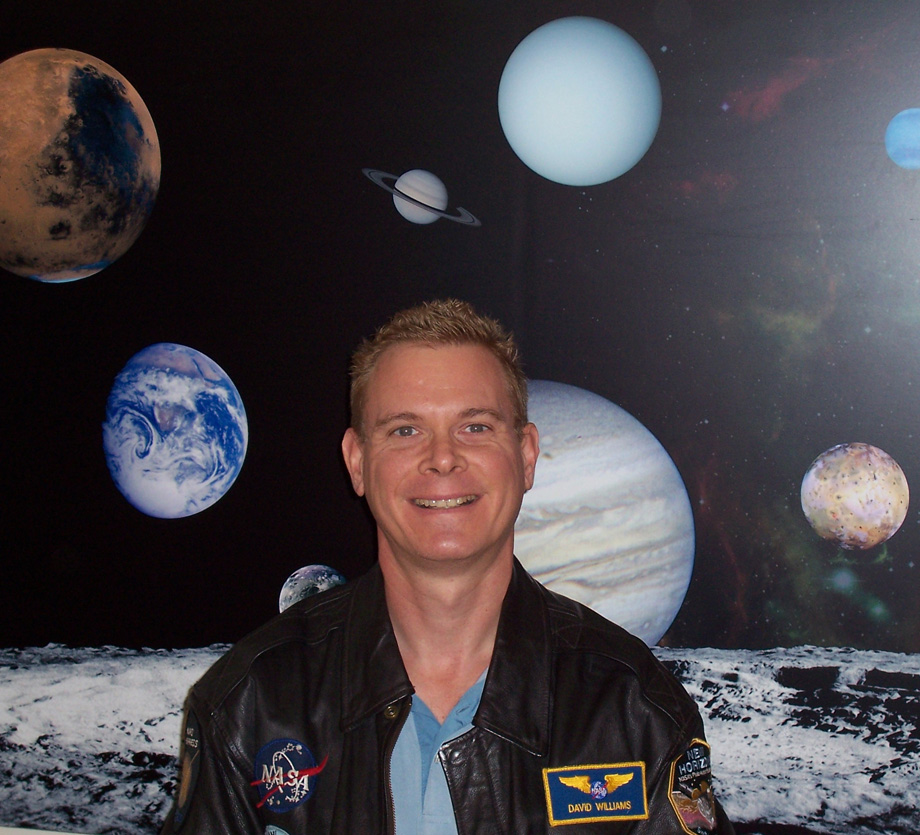New Discoveries Lecture Series: Dr. David Williams 'Asteroids, Ion Propulsion and NASA's Dawn Mission to Vesta and Ceres'

Join Arizona State University's School of Earth & Space Exploration for Dr. David Williams' upcoming New Discoveries lecture: "Asteroids, Ion Propulsion and NASA's Dawn Mission to Vesta and Ceres."
The Main Asteroid Belt is home to the rocky remnants from the formation of the solar system, including the two most massive objects, protoplanet Vesta and dwarf planet Ceres. Earth-based telescopes show that these objects are very different in composition — why? It is the goal of NASA's Dawn Mission to find out. Join professor Williams, a member of the Dawn Science Team, for a discussion of the results from Dawn regarding the amazing geology of these two objects and how they fit into our understanding of the solar system.
All attendees will also receive a free planetary poster from the Ronald Greeley Center for Planetary Studies!
About the speaker:
Dr. David Williams is an associate research professor and director of the Ronald Greeley Center for Planetary Studies. His research has included computer modeling of seismic wave propagation through planetary interiors, visible and near-infrared spectroscopy of the lunar surface, planetary geologic mapping of the satellites of Jupiter, the planet Mars, and the asteroid Vesta and dwarf planet Ceres, computer modeling of the physical and geochemical evolution of lava flows in a variety of planetary environments, and petrologic study of lava samples from Mount St. Helens. He is a member of the Science Team on NASA’s Dawn Mission to asteroid Vesta and dwarf planet Ceres. In 2014, the International Astronomical Union named asteroid 10,461 Dawilliams in his honor.
FAQs
What are my parking options?
The Marston Exploration Theater is located on the first floor of ASU's Interdisciplinary Science and Technology Building IV (ISTB 4), the home of the School of Earth and Space Exploration. ISTB 4 (map) is located near the intersection of Rural and Terrace Road in Tempe on the east side of campus. This seven-story structure is ASU’s largest research facility, and is accessible on foot via Orange Street and McCallister Ave. If arriving by Light Rail, exit at the University and Rural Road stop.
Parking is available inside the Rural Road parking structure just east of ISTB 4. From the parking structure, walk west and enter ISTB4 through the glass doors on the north side of the building. Please note that a parking fee is $3/hour and is charged upon exiting the parking structure. There is additional pay parking directly south of ISTB 4 available for $2/hour. There is an automated payment registration kiosk on the parking lot's west side (the corner near the building).
Do I need to arrive early?
Guests are recommended to show up by 7:00 p.m. to gain entry into the theater. At 7:25 p.m. any seats will be released to first come/first served at the door.
Where can I contact the organizer with any questions?
Contact the SESE Alumni & Events Coordinator, Stephanee Germaine at stephanee.germaine@asu.edu
Save

